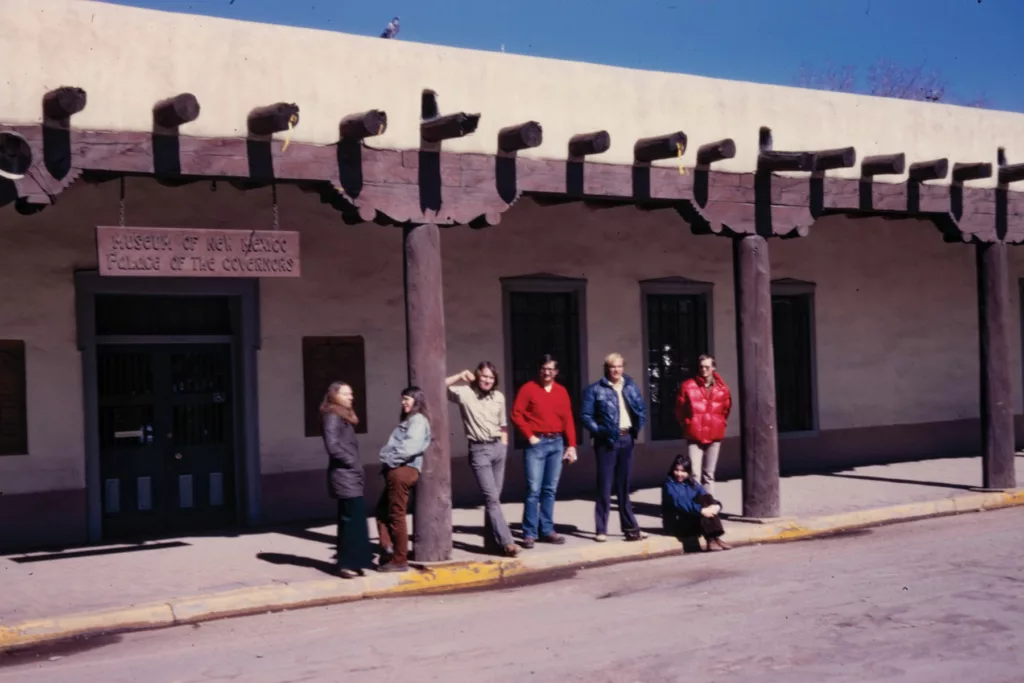In 1973, I was in my senior year at Colorado State University, just months away from graduation. I had been a history major since my freshman year and was enormously fortunate to be learning from professors passionate about their subjects.
They did more than simply teach. They cared about those of us sitting before them. I looked up to all of them as models for what a history professor should be and yearned to be one myself.
That spring, I enrolled in a Southwest History class taught by Dan Tyler. He was not only passionate about his subject but also eager to teach it, with each of his lessons wrapped in his own humanity.
One day in class, Professor Tyler pitched an idea: a trip to New Mexico to visit the Native pueblos where the cultures, he taught us, were unique and profoundly intertwined – Native, Spanish, Hispanic, and European.
As I remember it – 50 years later – eight or 10 of us went. I can’t remember exactly how we got there, but I think Professor Tyler lined up some station wagons. When we arrived in New Mexico, everything he had been teaching us was there to see for ourselves. Yes, our colleges and universities must do a great deal of scientific research, from the latest vaccines to the most sophisticated computer advancements, but we need to know history too.

History becomes real
On Good Friday 1973, we arrived at the base of a mountain below an ancient village called Truchas, one of the places in the Southwest where groups called the penitentes reenacted the Passion Narratives.
It was dark that night, very dark. We walked up a steep gravel road, arriving at the top just as the procession of penitentes was gathering behind a man carrying a very big, very heavy wooden cross.
We followed the procession toward an ancient adobe church and went inside. The big wooden doors slammed shut behind us. We took seats in the pew. My stomach was in knots. What was going to happen?
Slowly, rows of candles on the altar went out. The church, with its thick adobe walls, grew darker and darker. In the darkness, we heard horrible screams of a man being chained and whipped. Then banging – hard banging that made us all think this man was being nailed to the cross he had been carrying.
Minutes later the wooden doors were pushed open – and we fled back down the road.
Return to Truchas
In March 2022, 49 years after this amazing trip, my wife and I returned to Truchas. Before we left, I was going through some storage boxes and found the paper I wrote for Professor Tyler’s class, with his very kind note at the bottom – “Steve, you write very well.”
Little had changed in Truchas in nearly a half-century. We parked our rental car near the now shuttered, padlocked adobe church. I stood there and remembered our group filing inside. The door slamming. The candles going out. Then the reenactment – or was it? – of the crucifixion of Jesus Christ.
When we returned to Long Island, I called the CSU history department to reconnect with Professor Tyler. Although he is now retired, his warm face greeted me over a Zoom call, and he remembered that long-ago trip.
I told him how deeply his class had moved me. Why? Because he made history real. He made it about people and the lives they lived. He connected the past to the present. It was there, in front of our eyes, not in a book.
I left CSU that spring and pursued a career in journalism, which isn’t so far from history. It has been a long career, and it is time to look back and thank those who made a difference in my life.
Thank you, Dan Tyler.
Steve Wick is an award-winning journalist and writer living on Long Island. Dan Tyler’s latest book, Bucks County’s Benevolent Squire: In Search of George Frederick Tyler, is a biography of his grandfather.